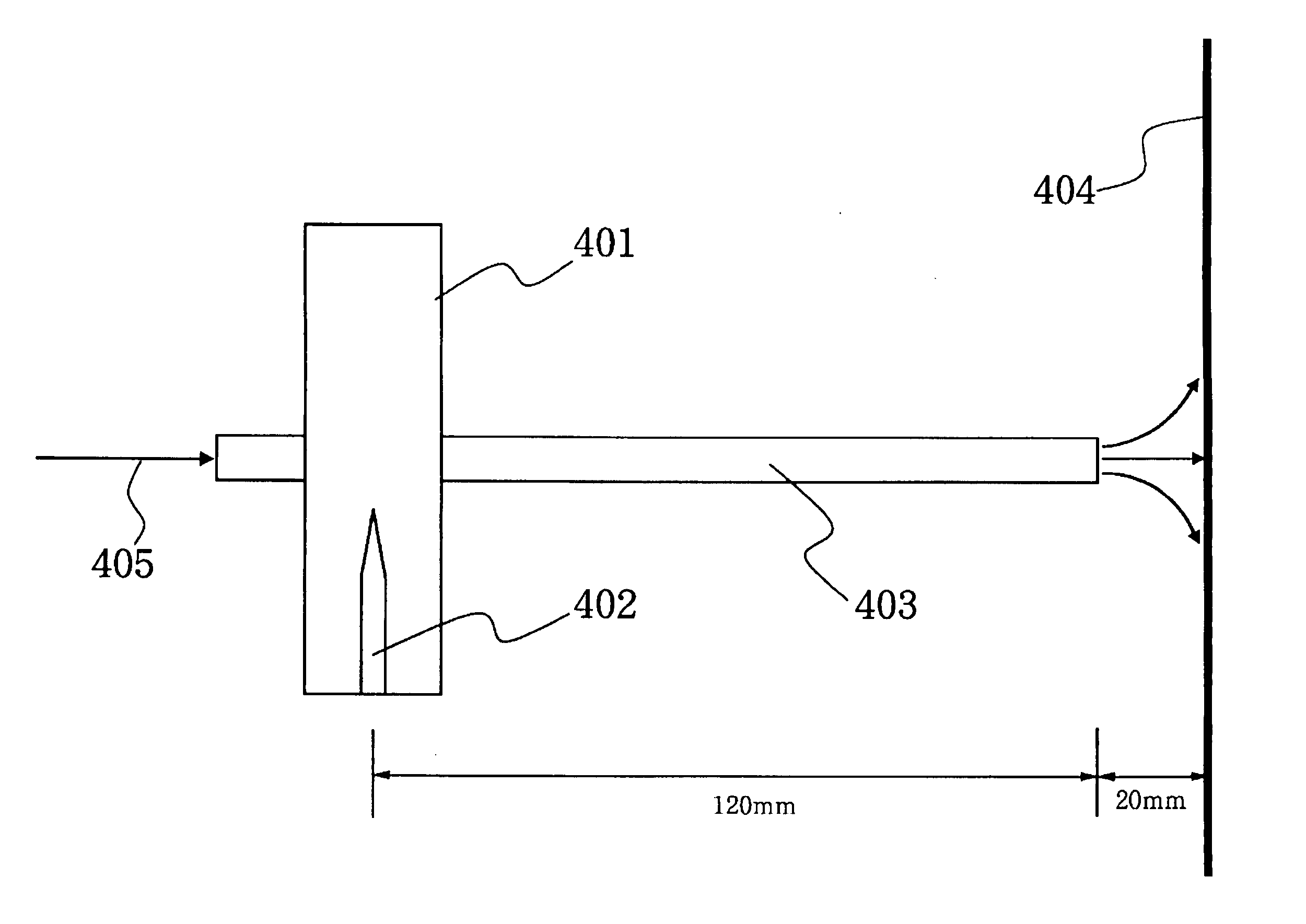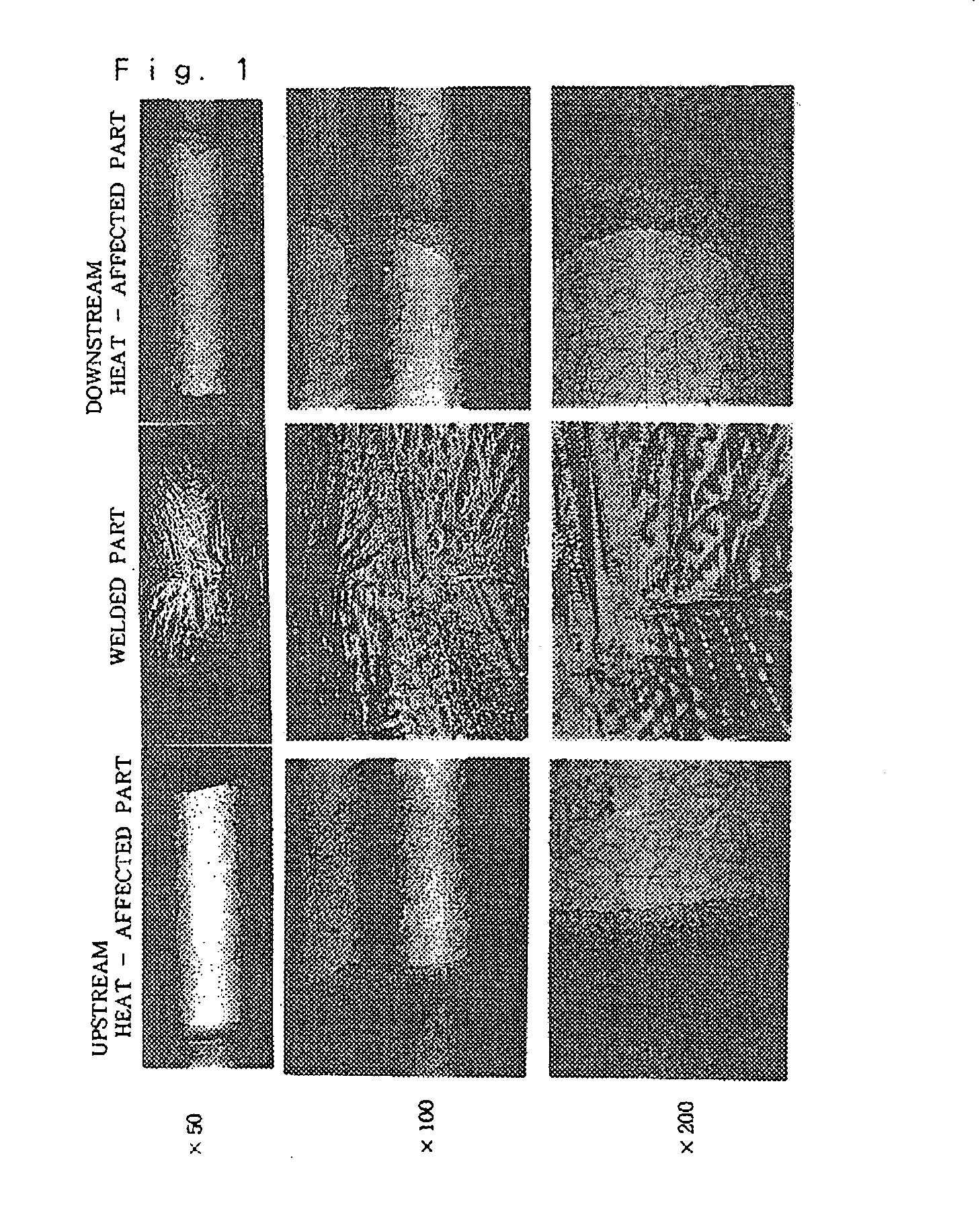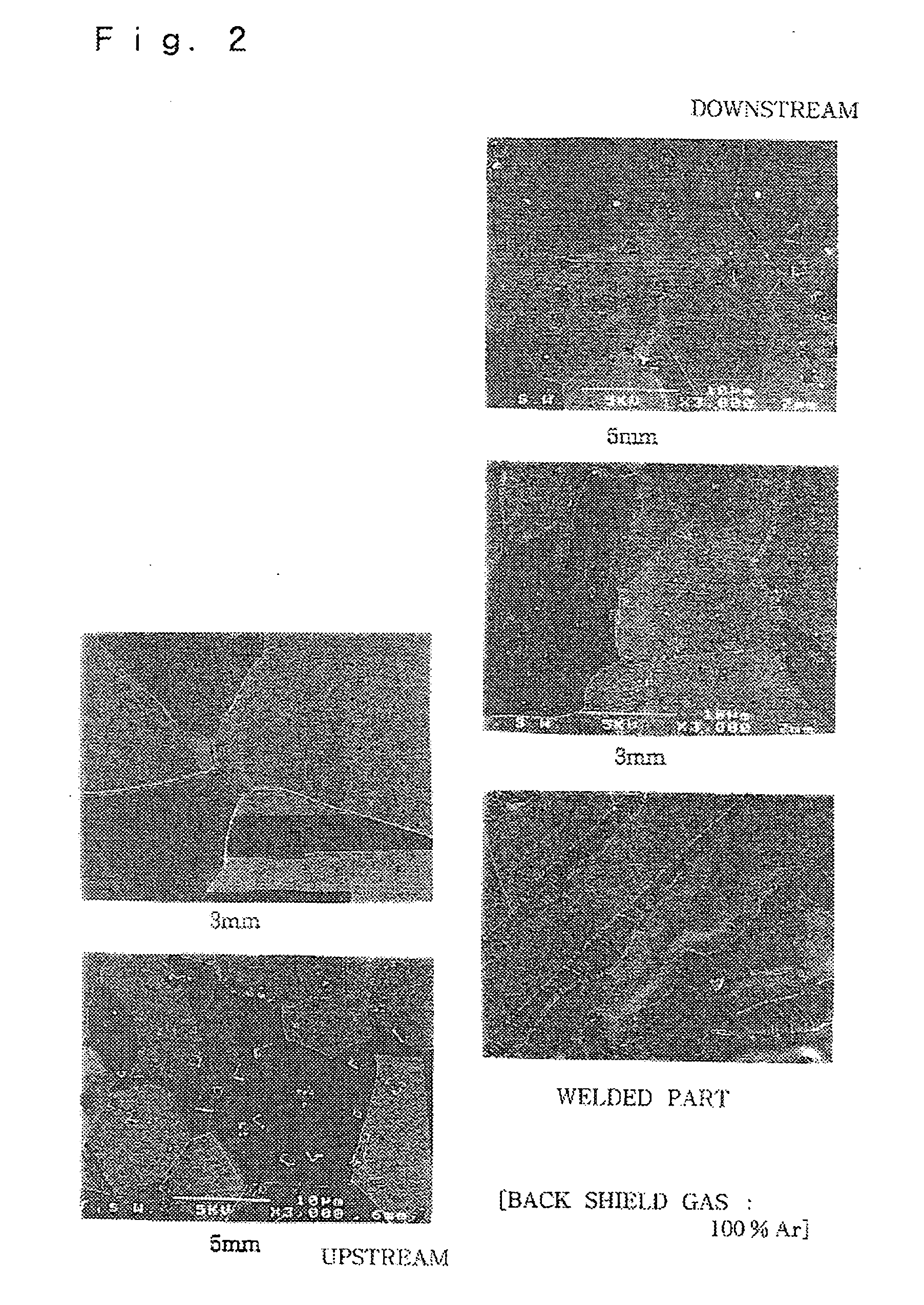Welding method for fluorine-passivated memberfor welding, fluorine-passivated method after being weld, and welded parts priority data
- Summary
- Abstract
- Description
- Claims
- Application Information
AI Technical Summary
Benefits of technology
Problems solved by technology
Method used
Image
Examples
embodiment 1
[0055] (Embodiment 1)
[0056] An austenitic stainless steel tube having a length of 12 cm and a diameter of {fraction (1 / 4)} inch was prepared.
[0057] The inner surface of this tube was subjected to electropolishing, and the surface roughness thereof was set to an Rmax of 0.7 micrometers. After electropolishing, this was maintained for a period of 10 hours at a temperature of 250° C. in an atmosphere of 100% nitrogen gas having a moisture concentration of 10 ppb or less.
[0058] Next, this was maintained at a temperature of 150° C. for a period of 3 hours in an atmosphere of 1% fluorine gas in nitrogen gas to produce a fluoride passivated film.
[0059] Subsequently, treatment was conducted for a period of 10 hours at 200° C. in a 100% nitrogen gas atmosphere having a moisture concentration of 10 ppb or less.
[0060] As a result of the treatment described above, a fluoride passivated film having a thickness of approximately 20 nm was formed on the inner surface.
[0061] This piping was sub...
embodiment 2
[0069] (Embodiment 2)
[0070] Experimentation identical to that of embodiment 1 was conducted, and the results obtained when the flow rate of the back shield gas was altered (the hydrogen concentration was 5%) are shown in Table 2.
TABLE 2StandardWeldingAmountFlowofBack Shield Gas Flow rateRateMetal1 L / min3 L / min6 L / min10 L / min20 L / min6 L / minFe3.73.620.424.222.315.4Cr5.64.15.88.911.521.1Ni0.30.30.10.40.40.6Mn0.30.41.01.41.32.4
(The units are × 1010 atom / cm2)
[0071] From Table 2, it can be seen that when the flow rate is increased, the amount of metal deposited on the silicon wafer is increased, and the contamination of the inner surface of the pipe is prevented. There is almost no change when the flow rate is increased to a level of greater than 10 L / min, and it is thus presumed that the optimal flow rate for the back shield gas is within a range of 6 L / min-10 L / min.
embodiment 3
[0072] (Embodiment 3)
[0073] An austenitic stainless steel tube having a diameter of ¼ inch was prepared, and this was subjected to fluoride passivation treatment to a thickness of approximately 200 nm.
[0074] The formation of the fluoride passivated film was conducted in the following manner.
[0075] The inner surface of the tube was subjected to electropolishing, and the surface roughness was set to an Rmax of 0.7 micrometers. After electropolishing, this was maintained for a period of 10 hours at a temperature of 350° C. in a 100% nitrogen gas atmosphere with a moisture concentration of 10 ppb or less.
[0076] Next, this was maintained for a period of 80 minutes at 220° C. in a 100% fluorine gas atmosphere to produce a fluoride passivated film.
[0077] After this, the tube was subjected to treatment for a period of 10 hours at a temperature of 300° C. in a 100% nitrogen gas atmosphere with a moisture concentration of 10 ppb or less.
[0078] Such tubes were immersed in the variety of c...
PUM
| Property | Measurement | Unit |
|---|---|---|
| Temperature | aaaaa | aaaaa |
| Temperature | aaaaa | aaaaa |
| Length | aaaaa | aaaaa |
Abstract
Description
Claims
Application Information
 Login to View More
Login to View More - R&D
- Intellectual Property
- Life Sciences
- Materials
- Tech Scout
- Unparalleled Data Quality
- Higher Quality Content
- 60% Fewer Hallucinations
Browse by: Latest US Patents, China's latest patents, Technical Efficacy Thesaurus, Application Domain, Technology Topic, Popular Technical Reports.
© 2025 PatSnap. All rights reserved.Legal|Privacy policy|Modern Slavery Act Transparency Statement|Sitemap|About US| Contact US: help@patsnap.com



